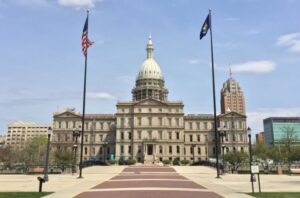Michigan schools, colleges have only spent 44% of federal COVID aid
(The Center Square) – More than two years after the COVID-19 pandemic began, Michigan K-12 schools and higher education institutions have only spent 44% of $7.92 billion of federal relief to…

(The Center Square) – More than two years after the COVID-19 pandemic began, Michigan K-12 schools and higher education institutions have only spent 44% of $7.92 billion of federal relief to combat learning loss.
The United States Department of Education says Michigan schools and colleges have spent $3.49 billion from the Education Stability Fund to combat learning loss for some of the 1.4 million students enrolled in local education agencies and more than 691,000 students in Higher Education.
The ESF of over $263 billion was sent to states and institutions for COVID-19 recovery nationwide. Lawmakers enacted the ESF through the Coronavirus Aid, Relief, and Economic Security Act in March 2020, with later allocations through the Coronavirus Response and Relief Supplemental Appropriations Act signed into law in December 2020. The American Rescue Plan Act was signed into law in March 2021.
The ESF has four funds: the Elementary and Secondary School Emergency Relief Fund, the Governor’s Emergency Education Relief Fund, the Emergency Assistance to non-Public Schools Fund, and the Higher Education Emergency Relief Fund.
Of $5.7 billion ESSER dollars provided to Michigan schools, only $1.48 billion, or 25.7%, has been spent. Schools face deadlines between 2022 and 2024 to spend the remaining $4.2 billion. In contrast, 94% of $2 billion of HEER money has been allocated.
The data includes grant funds awarded and expended by local agencies but not planned school funding.
According to public records requests, Rudyard Area School District in Michigan’s Upper Peninsula received more than $4 million of federal relief to help about 618 students recover from COVID-19 disrupting learning. That number is broken down as follows.
- GEER: $42,096.
- ESSER I: $291,050.
- ESSER II: $1.2 million.
- ESSER III: $2.7 million.
RAS spent more than $1.3 million of COVID-19 relief on student recovery, including summer programs, hiring one-on-one educators and additional teachers to provide smaller class sizes through the 2023 fiscal year.
The school recorded spending $238,000 on education technology, $94,000 on extra bus cleaning services between each route, and $237,649 to pay 2019-20 salary and benefits to staff through the COVID-19 pandemic.
However, the district also spent relief money on projects seemingly unrelated to COVID-19, including $412,000 to resurface a track, $322,467 for a security entrance, and $200,000 to buy two buses.
It also allocated $127,723 for the EUP Connect Collaborative that aims to provide 1 gigabit per second minimum fixed broadband within three counties by 2025, $110,000 for playground equipment and installation, $18,420 to hire an athletic secretary for the 21-22 school year, and $11,200 on a stop arm/front cameras on school buses.
The district spent $50,000 on new ventilation units in every classroom and $24,505 to buy textbooks for students who couldn’t learn remotely.
It spent nearly $75,000 to pay summer school bus drivers and more than $51,000 in hazard pay for teachers.
The U.S. Department of Education says that ESSER “[F]unds are provided … to help safely reopen and sustain the same operation of schools and address the impact of the coronavirus pandemic on the Nation’s students.”
Rudyard Area Schools didn’t respond to a request for comment about how the spending would help students recover from learning loss.



